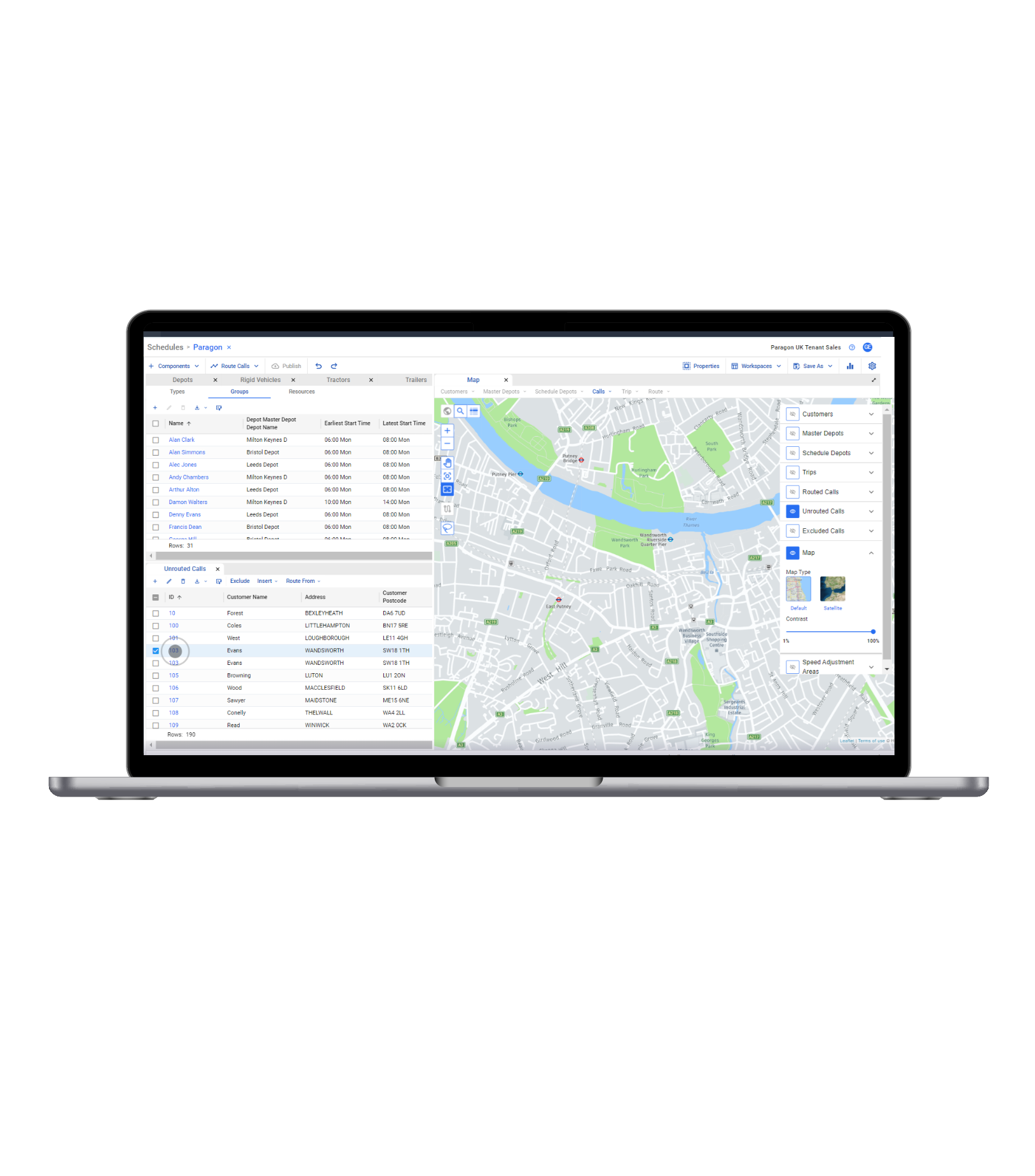It’s Time to Move to Cloud-Based Route Planning Software, Here’s Why
It’s Time to Move to Cloud-Based Route Planning Software, Here’s Why
It’s Time to Move to Cloud-Based Route Planning Software, Here’s Why
14 Apr 2021
 Manog Tseung | Product Manager
Manog Tseung | Product Manager
A year ago, moving your route optimization processes to a cloud-based route planning system was considered a good idea. Now, for many, it’s a must. Why?
If the upheavals of the pandemic have done nothing else, they’ve highlighted the need to provide a fully maintained and secure IT infrastructure that can be accessed from anywhere and at any time. This is true for all business management solutions, but it turns out to be especially true for route planning software.
Here’s how moving to cloud-based route planning software addresses the challenges you face now.
1. Access Your Routing Software From Anywhere, Any Time
Even if you’re only running a single iteration of your routing software from a desktop, restrictions on movement and gatherings mean you and your team may not be able to get to that PC as freely as you wish. That puts a crimp in your ability to route, schedule, monitor and manage deliveries efficiently. What’s more, with cloud-based route planning software, your team members can each sign on from anywhere with internet access at any time. If your business has planning operations in different regions and sites, a cloud-based solution will bring you centralized access to the separate configurations and data that is normally tucked away in each on-premise location. This allows you to support and easily change planning operations at a moment’s notice.
And with a cloud-based version of your routing system, you can retain full software capability. Even though you’re accessing it remotely, you can get the same complete set of features and computing power available on-premise. There is no loss of functionality, and the solution can operate as if it was working on a local desktop.
During the COVID-19 crisis, when delivery demands changed constantly, we found that this level of agility was crucial to businesses adapting successfully to the sudden changes in their time-critical operations.
2. Safety, Scalability and More
The advantages of moving to cloud-based software go far beyond simply remote access.
Others include the ability to gain consistent software performance and scalability. As your operation grows, with more vehicles and more complex routing requirements, the route optimization system capability can quickly ramp up to match your needs and provide a consistent performance and service level. In the cloud, new capabilities or regions can be brought online with minimum effort.
A cloud-based provider of routing software is also responsible for ensuring your data is backed up and always available, even if your facilities suffer a natural disaster, hardware failure or another unforeseen event.
Users of cloud-based route planning software also run less risk of software downtime. Higher levels of resilience combined with cloud-based system availability provide considerable improvements to uptime. Avoiding downtime reduces the cost, inconvenience, and risk of disruption for your business.
You’ll most likely find your software works better right away, too. Many businesses find that performance increases immediately upon migrating to cloud-based route planning software simply because the on-premise desktops they were previously using were outdated or no longer suited to growing business volumes.
You’ll also get a boost to data security. That’s because in the cloud, your software is constantly being monitored by a dedicated security team focused on awareness of the latest security threats and performing regular vulnerability scanning and penetration testing. Your data is safer than if it were sitting on your own PCs, overseen by an over-stretched internal IT team responsible for many things—only one of which is security.
3. Take the Strain Off Your IT Department
The simple fact is a cloud-based software provider can offer better service and lower overall costs through dedicated teams with the experience and the advantages of scale.
With cloud-based route planning software, your provider assumes responsibility for:
Providing you with 24/7 secure access to your solution
Contingency, redundancy and disaster recovery
Application of fixes, patches and upgrades to software
Performance monitoring and tuning
As well as maintenance and monitoring of:
Software
Systems
Networks
Security
Hardware
With a cloud-based route planning solution, you’ll always have access to the latest version of your routing software and instant access to security patches. There’s no need to go through the pain of managing and performing upgrades to local software distributed across multiple sites in your network.
Lastly, you may want to think about the challenges of scaling your IT capabilities. A cloud-based deployment can scale exactly as needed to match your growth. So you don’t have to worry about capital investments for technology infrastructure that might be necessary to support business growth.
A cloud-based solution is always maintained and run on a relevant and up-to-date infrastructure that provides consistent top-class service levels. Everything is managed behind the scenes, keeping it worry-free for you. Meaning you can focus on the best way to give your customers excellent delivery service while keeping route planning operations as efficient as possible.
Are you ready to make the move? We can help make your transition to cloud-based route planning software fast and smooth—get in touch with our team of routing and scheduling experts to find out how.
Tried the product tour and ready to get into gear?
Book your full demo with our team today to see how our advanced routing software can help you accelerate performance.



